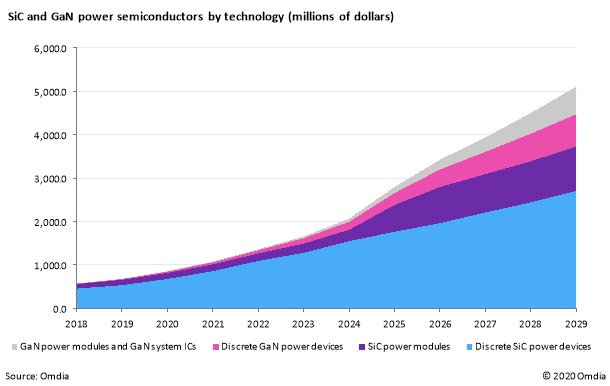Tachyum Inc. today announced its membership in the Trusted Computing Group (TCG), part of the company’s continued efforts to collaborate with other industry organizations and academic institutions to further develop and promote trusted computing technologies.
AKHAN Semiconductor Issued Major U.S. Patent, Completing Optics Portfolio
AKHAN Semiconductor, a technology company specializing in the fabrication and application of lab-grown, electronic-grade diamonds, announced today that it has been issued a patent by the United States Patent Office (USPTO) covering AKHAN’s diamond broad band mirror system and method.
Global Semiconductor Packaging Materials Market to Reach $20.8 Billion by 2024, SEMI and TechSearch International Report
The global semiconductor packaging materials market will track chip industry growth to expand from $17.6 billion in revenue logged in 2019 to $20.8 billion in 2024, a 3.4 percent Compound Annual Growth Rate (CAGR), SEMI and TechSearch International forecast in the Global Semiconductor Packaging Materials Outlook released today.
MagnaChip Ranked No.1 in the Global OLED Smartphone DDIC Non-Captive Market
MagnaChip Semiconductor Corporation (“MagnaChip”) (NYSE: MX) today announced that it has retained the top position in the global OLED Smartphone DDIC non-captive market in the first quarter of 2020. According to OMDIA, a global market research firm, MagnaChip recorded a 33.2% market share, which represents the all-time high figure for the company.
STMicroelectronics Boosts STM32Cube Ecosystem with New Features to Increase Software-Development Productivity
STMicroelectronics has released enhancements to the STM32Cube software-development ecosystem, letting users more easily filter and choose software examples, gather and apply development tools, and customize, use, and share STM32Cube Expansion Packages.
Second Quarter 2020 Silicon Wafer Shipments Up Over First-Quarter and Year-Ago Volumes
Worldwide silicon wafer area shipments rose 8 percent to 3,152 million square inches in the second quarter of 2020 compared to the 2,920 million square inches shipped in the first quarter of the year and surpassed second quarter 2019 shipments by 6 percent, according to the SEMI Silicon Manufacturers Group (SMG) in its quarterly analysis of the silicon wafer industry.
World’s Largest Semiconductor Foundry Joins RE100 and Calls on Peers to Step Up on Renewable Energy
One of Taiwan’s biggest companies, TSMC, is today committing to source 100% renewable electricity globally as part of RE100, and urging peers across the electronics industry to follow suit.
North American Semiconductor Equipment Industry Posts June 2020 Billings
North America-based manufacturers of semiconductor equipment posted $2.32 billion in billings worldwide in June 2020 (three-month average basis), according to the June Equipment Market Data Subscription (EMDS) Billings Report published today by SEMI.
The Evolving GaN and SiC Power Semiconductor Market Landscape
The emerging market for silicon carbide (SiC) and gallium nitride (GaN) power semiconductors is rapidly evolving from a startup-dominated business to one led by large-established power semiconductor manufacturers.
Alchip Technologies 7nm ASIC Capabilities Set Advanced Technology Pace
With the number of expected tape outs jumping to nine by the end of 2020 Alchip Technologies, Limited has become one of the leading advanced technology ASIC providers. Alchip revealed that it had completed 3 tape outs in May alone.
